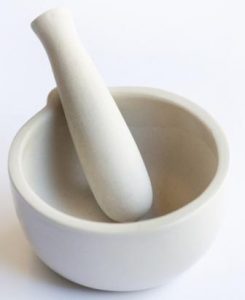Businesses today rely heavily on promotions and advertisements to sell their products. This makes it difficult to find a genuine product that would be well worth your money. The same holds true for Vitamin C serum as well.
While some Vitamin C serums come with excessive chemicals, others often boast exaggerated shelf life. Moreover, what’s worse is that these brands charge such huge amounts for these serums. Buying from a lesser known brand makes you question the serum’s quality, while buying from a known brand is simply not worth the money.
Instead, a lot of people prefer making their own Vitamin C serum at home. Homemade serums are natural, organic, and tend to be more effective. What’s more is that you can control all the ingredients that you want in your serum.
And if you too are looking to make a Vitamin C serum and don’t know how to start, this article is the one for you. We have listed all the necessary steps required to make the serum. So, follow the steps below and get right to it!
Making a Vitamin C Serum at Home
Making a Vitamin C serum at home is easier than most people would think. All it requires is some basic ingredients and 5 minutes of your time.
So before we actually get to the making process, it is essential to discuss the ingredients required. And if you are scared about needing complex ingredients, don’t worry. We won’t ask you to go to Mars and get a soil sample to add to the serum.
It’s a list of readily available ingredients that goes as follows:
- Vitamin C tablets (worth ½ teaspoon when crushed into powder)
- One tablespoon of hot water. Kindly make sure that the water is not boiling. You can substitute this with rose water as per your preferences.
- One tablespoon glycerine.
- A Vitamin E capsule. You can find it at the nearest pharmacy.
- A plastic whisk.
- A funnel.
- A dark-colored
Tip –
Some people also like to use Vitamin C powder, but we’d recommend tablets because they’re more reliable. You would again have to research the best brands offering pure content for powders, which makes this entire exercise pointless.
These are all the essential ingredients you need for making a Vitamin C serum. To add to the quality of the serum, you can always add essential oils such as rose, lavender, geranium, etc.
Now that you have all the ingredients required to make the serum follow the steps below to make a super-effective Vitamin C serum for yourself.
How to Make the Serum at Home
Step 1 – Crushing the Vitamin C tablets.

If you are using a powder, you can skip this step. If you are using Vitamin C tablets (which are comparatively less expensive), use any object such as a pestle (a tool you use to grind ginger, readily found in kitchens) to crush them and convert them into fine powder.
Step 2 – Mixing the Vitamin C powder.
Take ½ teaspoon of Vitamin C powder. Pour it into a bowl. Then, take one tablespoon of hot water and mix it with the powder. Make sure that the powder mixes well with the water.
Hot water can absorb more powder. Hence, it is always advisable to use hot water for the process.
Step 3 – Adding Glycerine
Glycerine acts as a base for Vitamin C. Adding it to the serum allows it to settle well on our skin. Glycerine also acts like sebum. Sebum is a protective barrier present naturally on our skin. Hence, mixing glycerine in the serum gives us a more natural look and protects our skin as well.
Step 4 – Adding Vitamin E Oil

An essential feature of every serum is its moisturizing qualities. Vitamin C itself is a dry substance. Hence, it becomes crucial to add something to moisturize our skin and not let it go dry.
For this, we will add Vitamin E to the serum, which possesses moisturizing qualities and can be an excellent addition to the serum.
To add Vitamin E to the serum, we will take a Vitamin E capsule (not a tablet). Use a capsule that you can puncture to get the substances out of it. Place the capsule over the bowl containing the serum and puncture. Make sure all the ooze in the capsule flows out and drops into the bowl containing the serum.
Empty the entire capsule into the bowl and mix it well. This will give moisturizing qualities to the serum.
Step 5 – Adding Essential Oils

Essential oils are excellent for skincare routines. Oils like rose, lavender, or frankincense have excellent skincare qualities. They can fight acne, add a glow to the skin, and reduce signs of aging as well.
Although this step is entirely optional, doing this would make your serum better than ever.
To add essential oils to your serum, use a dropper to take 5-6 drops of oil and add it to the mixture in the bowl.
Congratulations! Your mixture is ready! Now, all it needs is a good, strong mix.
Step 6 – Mix it all up!
Take the mixture and use a fork or a whisk to mix everything thoroughly. Using a fork or a whisk allows for better circulation of the ingredients. Mix evenly and adequately, and make sure not to leave any portion of the mixture concentrated.
Once the mixing is done correctly, stir the mixture with your hands to clean up the residue, if any.
Step 7 – Storage
The storage of the serum is as essential as the serum itself. Lots of light or high temperatures can destroy your vitamin C serum and make it ineffective. Use a dark-colored container to protect the serum from any light.
Even though the dark-colored bottle will prevent any excess light, store your serum in a dark, cool area. You can also keep the serum in a fridge. Use the vitamin c serum within a week and make a fresh batch afterward.
And that is all for your homemade, customized Vitamin C serum. Follow the above process and add a highly beneficial serum to your skincare routine. Experience the benefits of Vitamin C first-hand and boost your skincare regimen.
FAQs
Can I use the commonly available Lymcee tablets for the serum?
Limcee tablets are one of the most commonly available and viable sources of Vitamin C. They can be used for the serum as well.
Can I use other oils instead of glycerine to add to the serum?
Yes. You can use any non-comedogenic oils instead of glycerine. Commonly used oils that can replace glycerine are sunflower seed oil, jojoba oil, tea tree oil, etc.
Is it essential to store the glycerine in a dark place? Is exposure to even a slight amount of light harmful for the serum?
Storing the serum under direct sunlight can harm the serum. However, exposure to artificial light for a small amount of time will not impact the serum. Do store the serum in a dark bottle to minimize the effects of light on the serum.
Conclusion
Factors like price, purity, and effectiveness are what make the Vitamin C serum a viable and useful product. However, spending a lot of money on a serum that can also potentially expose your skin to chemicals, or not be as effective as it claims to be is not worth it.
Instead, making the serum at home not only saves you a lot of valuable money, but also provides you with good quality, genuine serum that you can use in your skincare regimen. And what’s beneficial is that you get to control the ingredients that you want in your serum.
With this, we hope that this guide was able to help you with making your own Vitamin C serum. Let us know what you think about homemade Vitamin C serums in the comments below.


